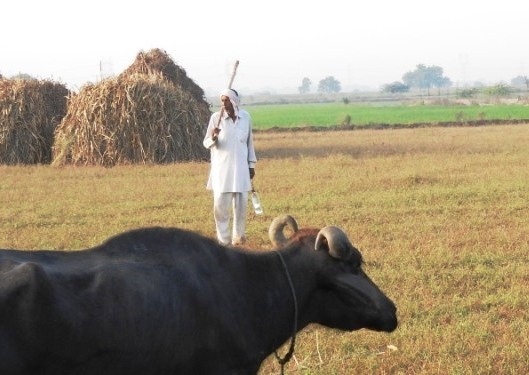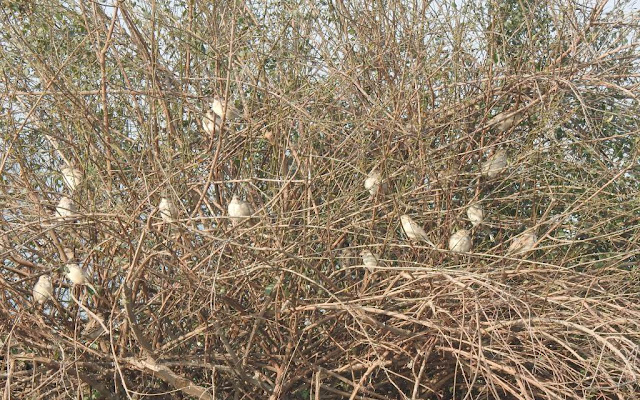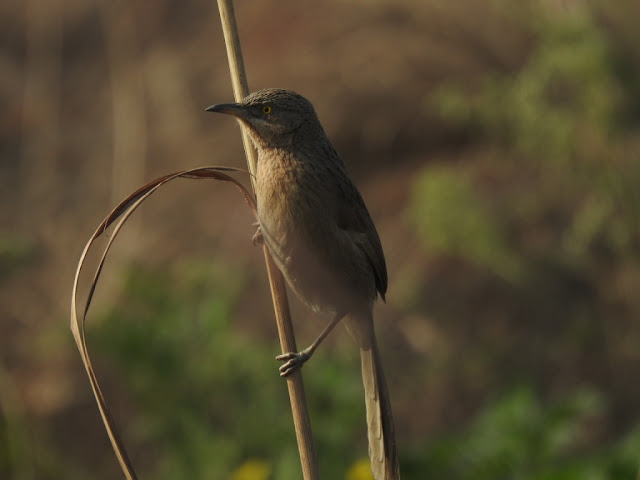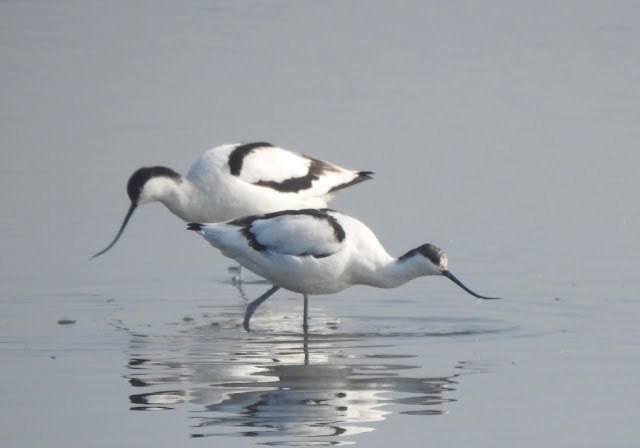 |
Blue cheeked bee eater with a Plain tiger butterfly
|
The heat was building up since daybreak as we hurtled down the
stupendous Gurgaon highway. It was a still and humid September morning in
Delhi, but that was not going to deter us from trying to steal a few birding
moments from what is on offer in and around Delhi as we headed to the Basai
wetlands RV point. A short drive later we found ourselves negotiating the
marshes of an area called Dharampur .
It soon emerged that there was not much to be seen here today as the
water level was high and the locals had taken to fishing in makeshift boats
made of giant truck tyre tubes. We were
quite excited just to be in wetlands not lined by defecating humans!!
 |
Dharampur
|
A black capped night heron, seen in the distance, evoked some interest. We felt quite
entertained by the noisy flocks of bank mynas and asian pied starlings but it was decided to move to another wetland near AIIMS Jhajjar.
Even as we made quick headway on the very good four lane road, the
incongruously large and imposing AIIMS building came into view.
The side road exit after the AIIMS outreach centre turns right into a
dirt track marked “Jitender Gulia Cricket academy, Badsa”. This revealed a
serious looking lush green academy grounds complete with nets. We managed to catch a glimpse of a Sunday
morning big boys’ tennis ball cricket match, which was equally serious. Every near miss at the wickets and every
lofted shot was greeted with a loud BC and MC from the fielders....
My South Indian, South Bombay educated wife was scandalized - even as my
childhood memories suddenly came welling up; I’m born and brought up in Delhi,
you see.
I have never managed to fully explain to her before, why Bhajji would
never have had racial undertones when he apparently called Andrew Symonds a
“Monkey”.
 |
Badsa trail
|
 |
Mongoose
|
The track between lush green and waterlogged paddyfields soon revealed
the low lying wetland in the distance. A black necked stork was spotted at its
far end along with several grebes and common coots. The tall grasses revealed
plain prinias and Siberian stone chats amidst the constant and irresistible
Zitting of the cisticolas. There were impressive flypasts of flocks of black
headed ibis, cormorants and even a knob billed duck.
 |
Black breasted weaver
|
 |
Plain prinia
|
 |
Plain prinia
|
A cacophony of weaver birds froze us in our tracks. We could see several
proud males advertising their perfectly tailored nests and raising their
attractive yellow caps to the ladies!
We were explained that the streaked weavers build nests in tall water
grasses whereas the baya weavers always build on the trees.
If only humans were to similarly learn to respect each other’s territories....
 |
Baya weaver on tree
|
 |
Streaked weaver on grasses
|
 |
| Streaked weaver |
The eternal food chain spectacle of Nature played out right in front of
our eyes with a classic NatGeo David and Goliath twist.
The lead predator in this plot was the handsome blue cheeked bee eater
with its disproportionately long and sharp beak. The “hapless” prey was the
plain tiger butterfly. Just as the bee eater snapped up the butterfly and was
about to gobble it up, came the twist. The bird suddenly had a change of mind
and let the petite lepidopter go!! No wonder it’s called a tiger, i thought.
But what was its secret weapon, i wondered.
 |
Blue cheeked bee eater |
Our knowledgeable guide informed that these butterflies feed on the
milkweed which contains a cardiac glycoside that doesn’t seem to affect them, but
they are rendered toxic to the birds which try to eat them!!
A bit of googling later revealed that these butterflies therefore stay
around the milkweed plants of genus Asclepias.
Isn’t it ironic that Asclepius, the Greek God of medicine and Asclepias,
the toxic milkweed are so similar sounding!!
Probably Natures way of reminding doctors that the difference between
medicine and poison is often so subtle!!
With the heat building up, we had to call it a day early, but not before
having a bit of adventure with our low clearance car climbing over a rock lying
on the road. Some of the things one has to learn when upgrading from an all
weather Alto to a City car...
Tour operator: NINOX Owl About Nature
Birding guide: Abhishek
Camera: Nikon P 600 and Oneplus 7
Locations:
Dharampur: 28°30'12.7"N 76°57'56.2"E
Badsa: 28°30'31.4"N
76°51'46.7"E44+





















































